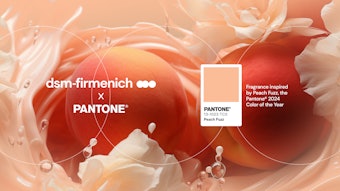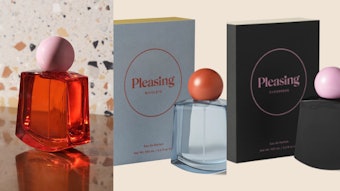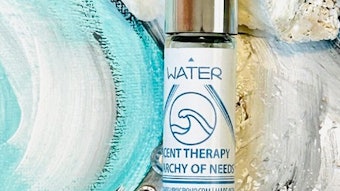The fragrance market—with sales of $30.5 billion in 2006—is one of the largest cosmetics and toiletries segments globally. While historically it has been one of the less dynamic markets—dragged down by declining unit prices, oversaturation of new products and low brand loyalty in key value countries, including the U.S.—fragrances’ strong performance in 2006 (almost 6% growth in 2006 in U.S. dollars, in fixed exchange rate terms) capped off a three-year trend of growth acceleration. Economic prosperity in the emerging markets feeds the growth, but increased demand for celebrity scents and youth-oriented fragrances are largely credited in maturing and developed markets.
The emerging regions are becoming increasingly important to the worldwide fragrances market. Latin America and Eastern Europe alone account for almost one-third of global sales, nearly doubling in value from 2002–2007 to an estimated $9.3 billion. Their influence is also evidenced by the growing portion of global sales being accounted for by the mass segment. At $18 billion, premium fragrances make up almost 60% of the market, but it is mass brands that are contributing most to growth—both in percentage and absolute terms. Although there have been moves towards masstige and premium fragrances in Latin America, there is still a strong preference for mass brands right across the region, and they outsell premium perfumes in Eastern Europe, as well.
Asia-Pacific, such an important driving force behind growth in other beauty markets, is less significant in fragrances. With predicted sales of approximately $2 billion in 2007, the region accounts for less than 7% of the worldwide market, and has historically achieved a growth below the global average. This is primarily due to cultural norms where consumers prefer to be odorless and associate heavy scents with the masking of body odor. Japan, for example, is one of the wealthiest countries in the world, yet annual per capita spending on fragrances is less than half that of Russia and three times lower than the figure in Brazil.
Short Shelf-life Characterizes Developed Markets
Western Europe and North America are the most significant value markets, accounting for almost 60% of global sales. Both regions are marked by competitive markets, high launch rates and short shelf-life for new scents. Despite these difficulties, companies are succeeding in lifting value growth in Western Europe, at least.
Premium fragrances are driving growth in both Western Europe and North America, but dynamism is, on the whole, coming from the lower end of the segment and from discounting. In the U.S., for example, manufacturers are exploiting the migration of consumers toward mass retailers with innovative strategies to suit this channel. Elizabeth Arden introduced Curious Britney Spears into the mass channel with a 30 mL bottle, bringing price points down to capture a younger audience.
Globalization Inspires New Launches
Innovation is central to the fragrance market, where launch rates are high, and globalization (besides opening up new markets to international players) is providing opportunities for new product development. Rather than trying to convert new country markets to international trends, for example, some companies are creating brands tailored to a particular local market or ethnic group. In autumn 2007, for instance, Disney launched a Pirates of the Caribbean cologne in the U.S., specifically targeting Hispanic boys ages 4–11. The reverse is happening, too, with manufacturers taking a trend from abroad and introducing it into another market to stimulate new demand. The introduction of baby fragrances by premium brands such as Bulgari and Burberry in countries where there is no traditional usage, such as the U.S. and U.K., is one example.
Appealing to the Younger Set
As in the rest of the cosmetic and toiletries market, women are the primary consumers, with women’s fragrances accounting for almost two-thirds of total sales. However, the men’s segment has seen a surge in demand in the past two years—the result of changing male grooming patterns, in which the average man now spends longer in the bathroom and a larger portion of his income on shaving products and toiletries. Manufacturers’ efforts to attract men away from inexpensive body sprays, through the introduction of new lines, partner scents and widespread advertising, have also helped to spur value sales.
Targeting younger market segments, teens in particular, is a more recent development, and one which holds strong potential for premium fragrances. Today’s 13–19 year olds (of which there were approximately 860 million globally in 2007) have far more spending power than any generation before them and are serviced by a global teen products market worth nearly $250 billion per year, according to Euromonitor International estimates. Not only are they more affluent, today’s teens are generally more sophisticated consumers than ever before, boding well for premium fragrances.
Ralph Lauren, Christian Dior and Yves Saint Laurent are just three of the high-end fragrance franchises that have begun targeting a younger demographic. Valentino joined their ranks in late 2006 with the launch of Rock ‘n Rose, the aim of which is to inspire a new generation of young Valentino consumers. A year on and the fashion house has followed up with a line extension, Rock ‘n Rose Couture. Burberry has unveiled plans for a new youth fragrance called The Beat to update the label’s image with a more energetic, trendy edge.
No Slump in Celebrity Trend
Celebrity scents are the biggest phenomenon to hit the global fragrance market in recent years. By riding on an established image with a pre-existing consumer base, fragrance makers can cut back on marketing—an important savings in a launch-heavy sector that involves high innovation costs. Although it can be risky to rely on a celebrity’s image, too easily tarnished by today’s ubiquitous media, the trend currently shows no signs of abating. Thirty new celebrity scents have hit U.K. shelves alone in 2007. According to a U.K.-based fragrance retailer The Perfume Shop, they account for 40% of the total market and have enjoyed a sales boom of 2,000% since 2004.
Celebrity fragrances are primarily positioned toward younger women and teens, but manufacturers are increasingly expanding the trend to new demographics. Lovely by Sarah Jessica Parker aims at the 30-plus age group, and Danielle Steele’s eponymous scent targets the older set. Men’s celebrity fragrances have become the latest area for innovation, and, in 2006, Sean John Unforgivable became the first to break into the global top 10 for premium men’s scents.
Coming years could also see the beginnings of what some industry sources suggest is an inevitable backlash against celebrity scents—and this will be driven by consumers as their growing sophistication makes them more likely to be persuaded by interesting scent combinations and innovative delivery formats than by savvy marketing campaigns. However, manufacturers may also start pushing for this shift. Celebrity brands do not tend to have longevity, and in fragrances, extending shelf life has become vital in an increasingly fickle market.
There is some evidence that this is already beginning to happen, as speciality fragrances emerge as a fast-growing niche. Le Labo, for example, is an ultra high-end but unbranded fragrance range that was created as a reaction against mass-produced premium scents. Fragrances are mixed on-site upon purchase, and are only available in selected retailers and the company’s own “labs.” The proliferation of bespoke fragrances is further evidence of this trend toward exclusivity over broad-appeal brands.
Even more compelling, some heavyweight scent brands are moving toward a narrower but higher value consumer base. Procter & Gamble’s vice president of fine fragrances, Markus Strobel, said the company would be aiming for “fewer, bigger and better launches.” Other firms, such as Bulgari and Gucci, are taking tighter control over the distribution of their fragrances to keep them out of mass retail channels.
Wellness Trends: the Catalysts of Innovation?
The global fragrances market is set to grow by approximately 3% through 2011 to reach $35 billion. While premium fragrances will remain the largest segment with steady growth of 2% a year over the forecast period, mass fragrances will be the more dynamic, with a compound annual growth rate of 4%, driven by new demand in emerging markets.
The link between fragrances and well-being is one area of the market that has not been well explored, yet aromatherapy is a long-established notion and holistic beauty products are becoming a lucrative new niche. To date, attempts to tap into this trend have largely come from gimmicky novelties such as pheromone-containing “love potions.” The House of Rose offers an antiaging perfume that claims to make the wearer appear six years younger, and Smiley by Ora-ïto purports to be the first-ever antidepressant fragrance. Perfumes based on food scents, so called gourmand fragrances such as Jo Malone’s Pomegranate Noir, are as close to the holistic trend as the mainstream market has gone. However, this could become an important source of innovation, and some big-name players, including Procter & Gamble, have already declared their intentions to better educate consumers on the aromatheraputic benefits of certain scent ingredients.










